About 70 kilometers northeast of Milan in the province of Bergamo, Italy, the municipality of Sarnico currently plays host to under 7,000 inhabitants. It was in this small harbor town on the shores of Lago d’Iseo that Pietro Riva began building commercial boats with his family. Although the company’s founding dates back to 1842, much of the early innovation came through Pietro’s grandson, Seraphino, in the early 1900s. By 1920, Seraphino shifted from transportation vessels to powerboats, and the business took off. In the subsequent decades, the Riva shipyard became highly acclaimed in the boat racing industry, producing numerous record-setting yachts in both international and domestic competitions.
The preferred choice for celebrities and royalty alike, Riva dominated the maritime market throughout the mid-1900s. In 1950, leadership transferred to Seraphino’s son, Carlo Riva, who captained the firm through this era of Italian industrial advancement. Known as “L’Ingegnere,” Carlo was an ambitious and passionate leader who introduced elegant wood-based designs that exuded grandeur and played upon the ethos of speed to seduce the jet-set clientele. In 1956, Carlo began a pivotal collaborative effort with designer and architect Giorgio Barilani to produce some of the iconic models that we know today – including the majestic “Riva icon” Aquarama, released in 1962 with a top speed of 73 km/h.
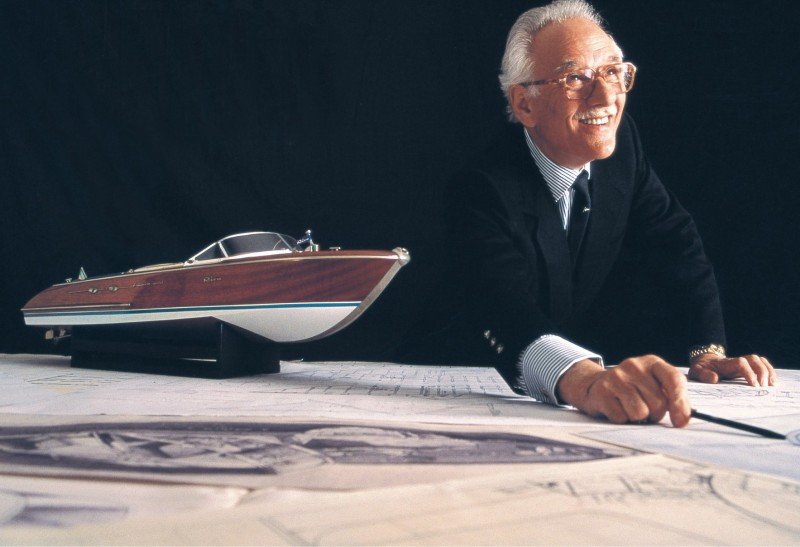

Another milestone achieved by Carlo was the implementation of fiberglass in the construction of vessels in 1969. The material was significantly lighter – which allowed smaller engines to be used while maintaining similar power-to-weight ratios, required less maintenance at a lower cost, and could be molded easily into more appealing shapes. The day cruiser Bahia Mar 20′ and cabin cruiser Sport Fisherman 25′ were products of this composite method, as well as more modern products such as the St. Tropez and the Superamerica, and although this technique was prosperous and integral in the evolution of hull design, Riva continued making wooden boats until the final Aquarama Special, no. 784 was built in 1996.
It should be mentioned that Carlo played a major role in the advancement of boat making – not necessarily with superior technology, but with the angling of the bow, usage of wood laminates, varnishes, and chrome plating – in addition to mastering the development of the Riva Crusader engine.
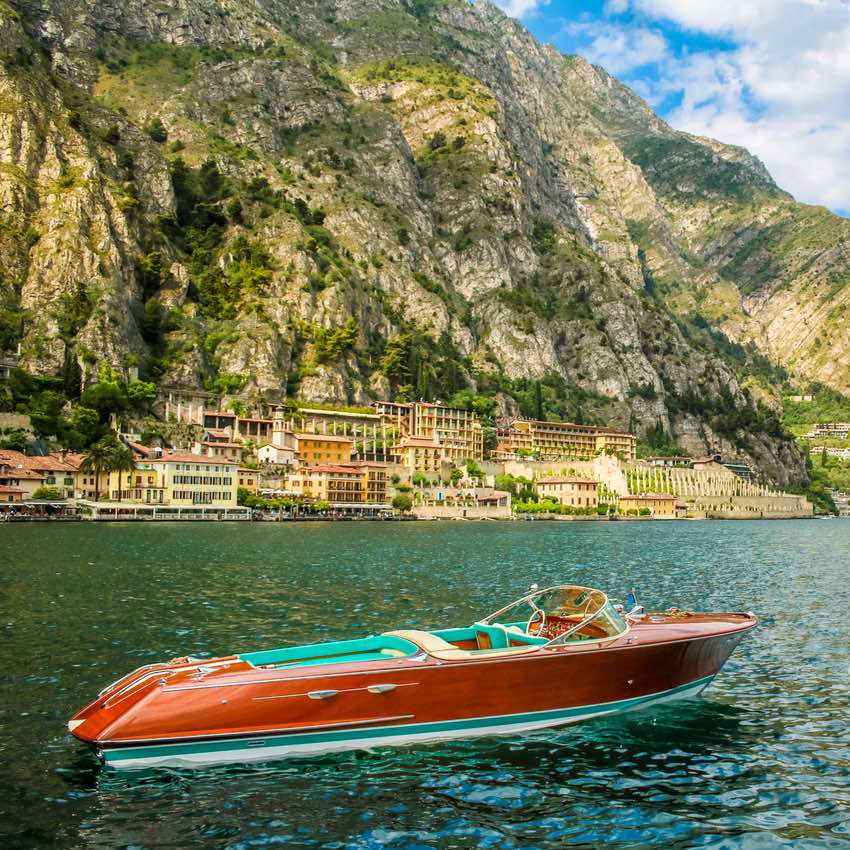

Growing pains in the Italian industrial climate saw Riva sell off the boatyard to US company Whittaker in 1969, with Carlo staying on as Chairman and General Manager until 1971, ultimately relinquishing control to Gino Gervasoni, his brother-in-law and long-term business partner. As the company steadily fell into decline through the late 70s and 80s, British group Vickers – the owner of Rolls-Royce at the time – fully bought out the Riva company in 1989, bringing an end to the family-led era. Two years later, the group unveiled the 58′ Bahamas, designed by Mauro Micheli, at the 1991 Geneva Boat Show. At the turn of the century, the group changed hands to current owners – The Ferretti Group – which gave the shipyard the infrastructure for large-scale, superyacht production.
Today, the brand has three separate shipyards bolstered by Chinese industrial giant Shandong Heavy Industry Group (Weichai Group) and re-invigorated by design studio Officina Italiana Design in cooperation with the group’s Engineering department to re-invoke the spirit of fine Italian yachting artistry.
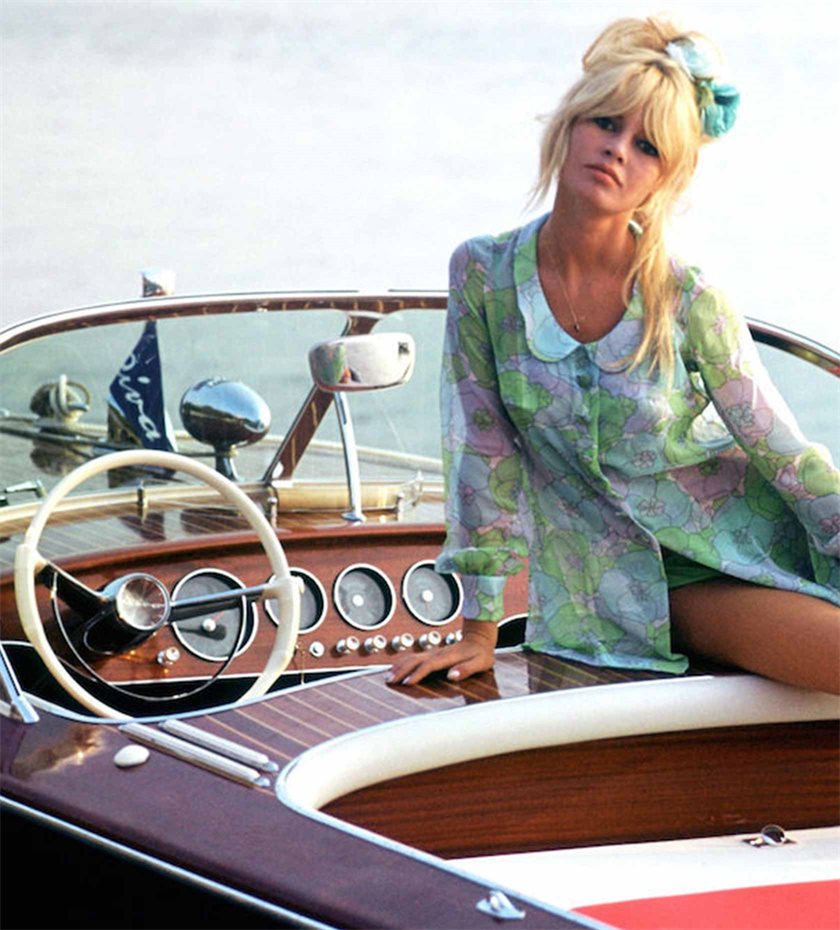

The Riva yard in La Spezia became operational in 2004 and is the largest center for testing, launching, and delivering yachts for the group. It was “conceived to champion state-of-the-art production techniques and to build the largest models in the range – from 76- to 110-footers”.
One of the largest shipbuilding facilities in Europe, the Ancona shipyard is the production site of the brand’s Superyachts Division – which includes the steel and aluminum Riva 50m.
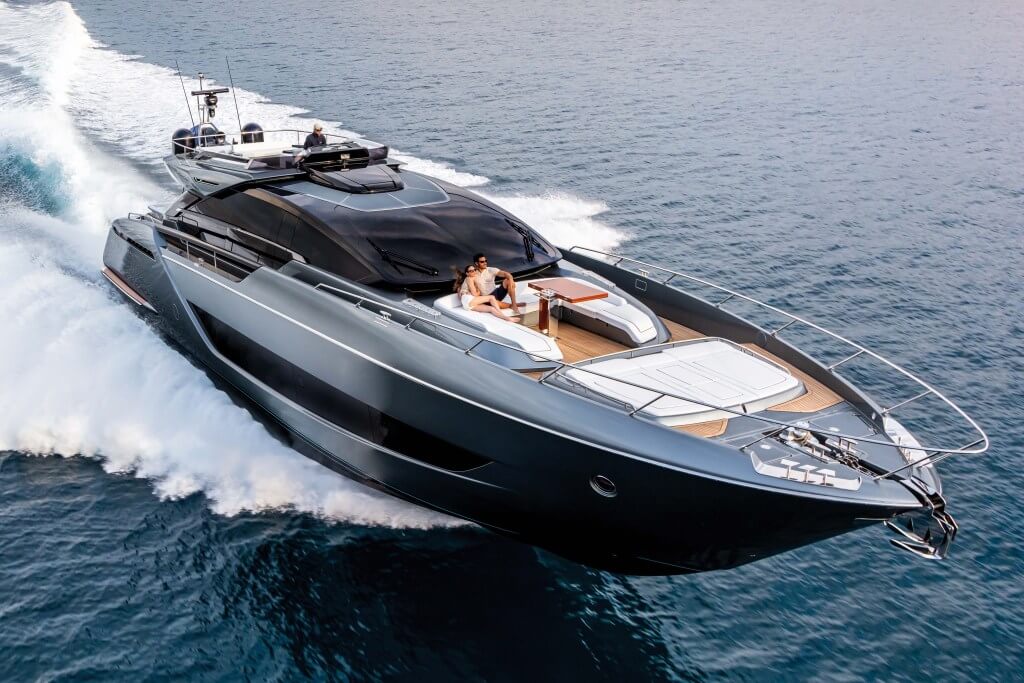

Let’s have a look at some of our favorite classic models below
Of course, we must first highlight the Aquarama. The “Riva icon” was known as the Ferrari of the boat world and production of the three types (Lungo, Super, Special) ran from 1962 to 1996. The varnished mahogany hull drew inspiration from the American Chris-Craft motorboats and has been referenced in pop culture numerous times throughout the decades.
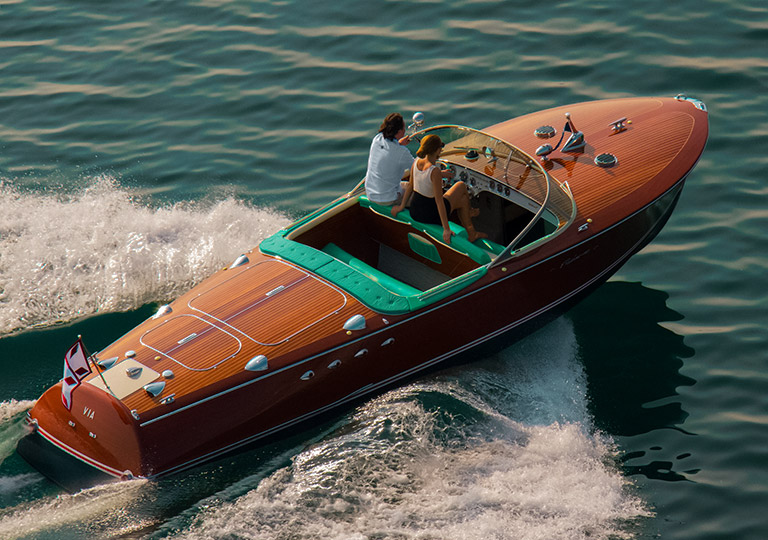

We also think it’s only fair that we mention the original staple Riva boat – the Tritone. A crucial part in the reputation of the Riva name, the Tritone evolved from the firm’s BQ 69 design and was given its name in 1953. The largest and most expensive boat in the company’s arsenal, the Tritone was outfitted with twin engines and the second row of seats in the cockpit – in addition to its large fuel tanks and long-range – which made the model an instant crowd-pleaser.
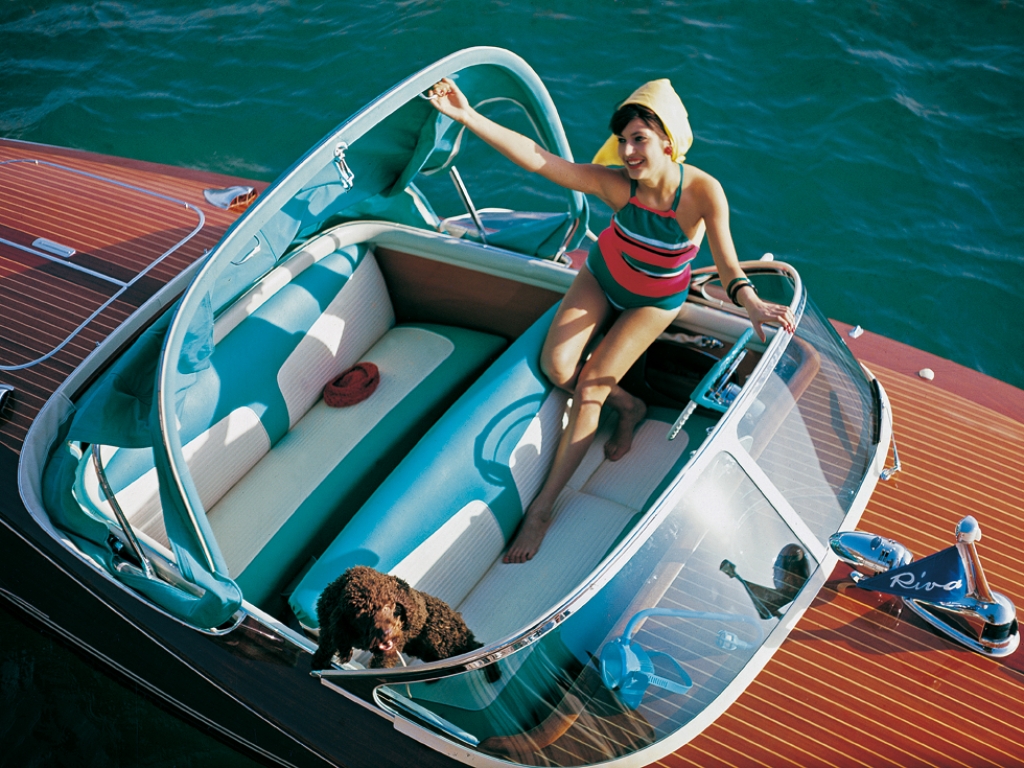

Our next classic is Riva’s best-known model after the Aquarama, the Ariston. Conceived in 1950 and with production lasting over 24 years, the Ariston model can be considered the purest classical Riva shape and was divided into three versions. The original Ariston, manufactured between 1950 and 1972, contained the smallest engine, while the succeeding versions – the Ariston Cadillac (1956-1957) and Super Ariston (1960-1974) – can be distinguished by their larger engines and stylistic features such as the wooden “gunwale” – a raised edge on the foredeck, introduced in 1968 to prevent slipping. It was in this model that many specifications were added and changed, including the full length, engine size, and aesthetic details such as trim color, folding seats, and side pockets.
If you are fortunate enough to come across one of these precious machines, be sure to take your time and appreciate the beauty of the craft – because for Riva, the devil is in the details, and inspiration can be found aboard any of these classic models!
Read more YACHT articles HERE